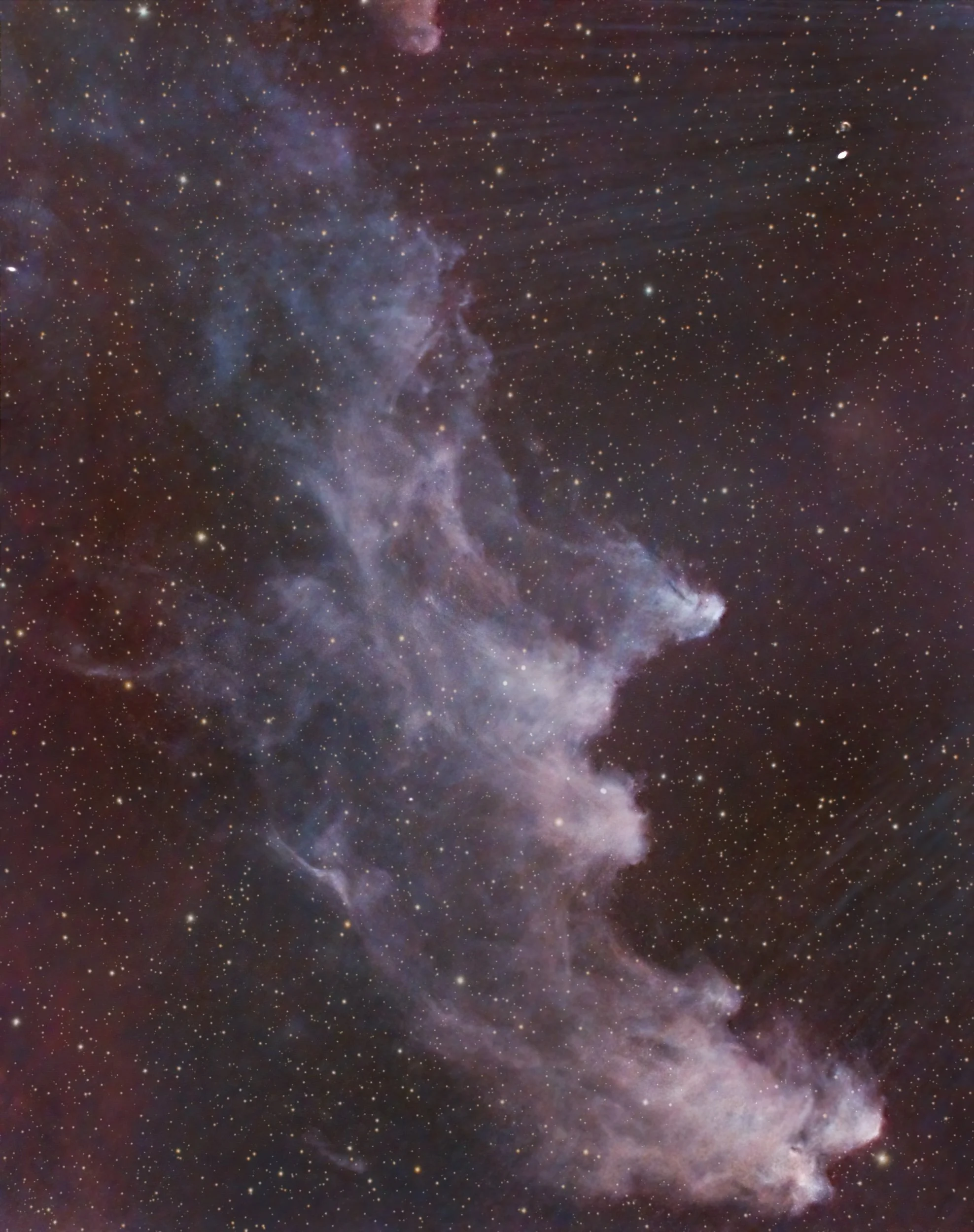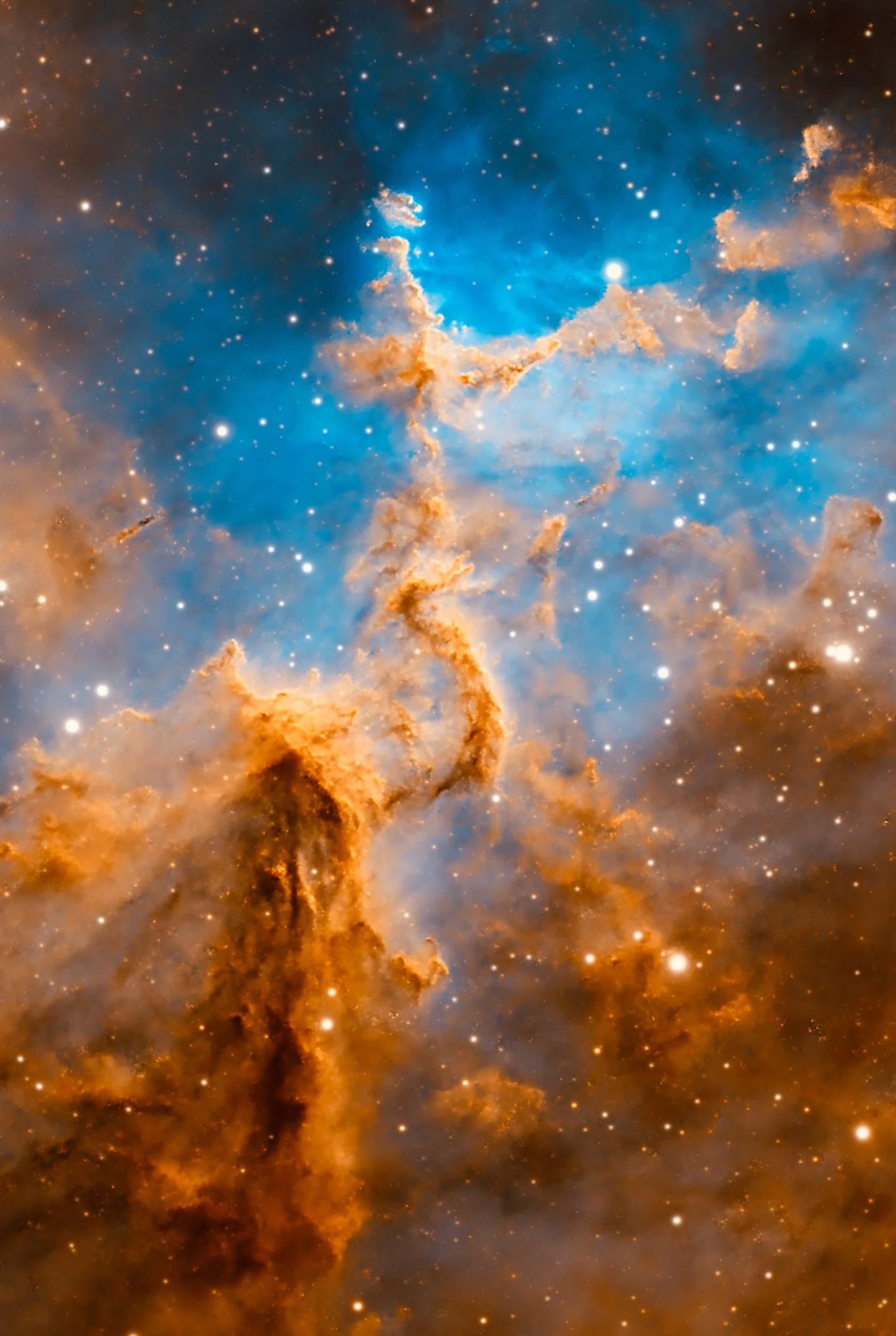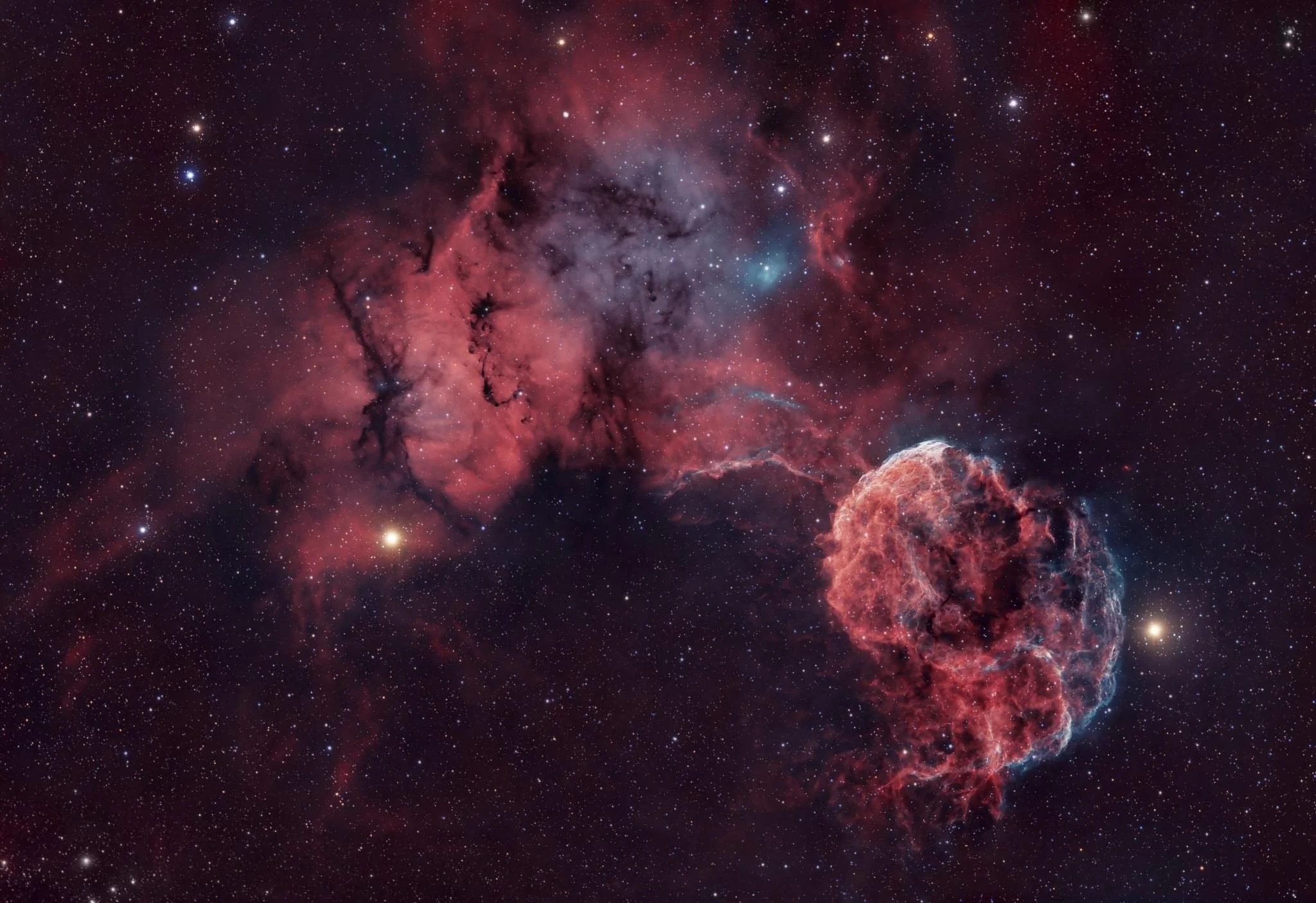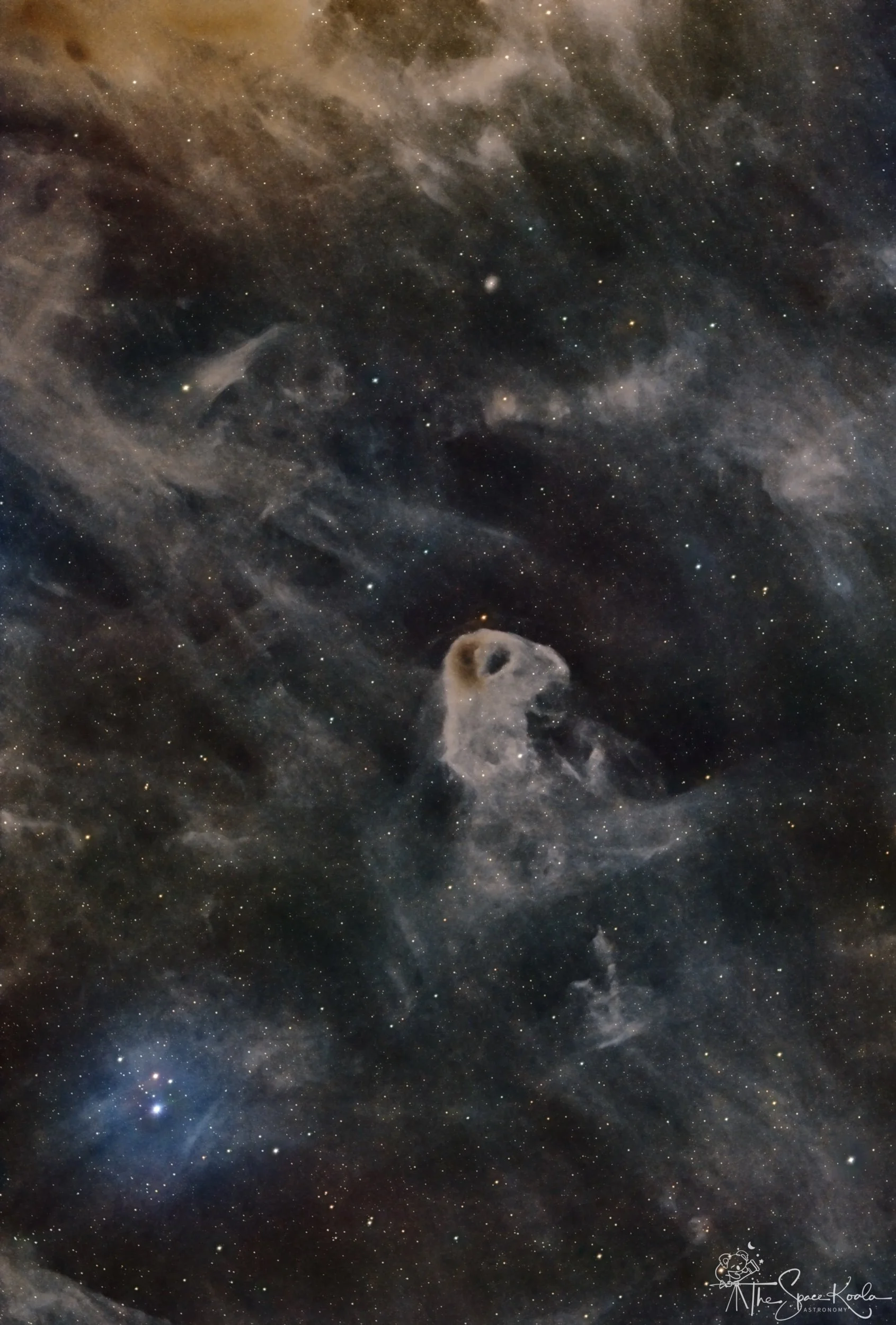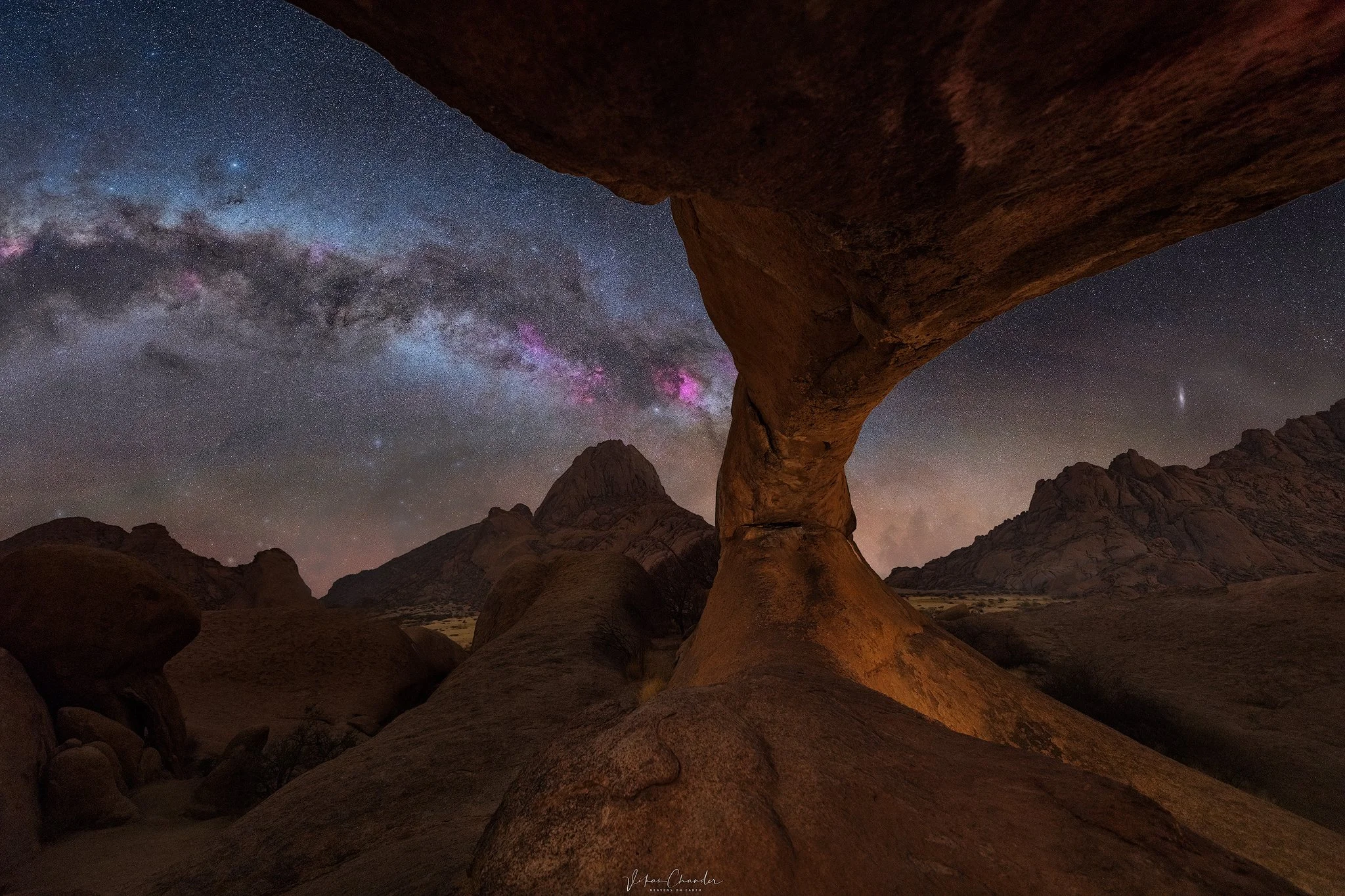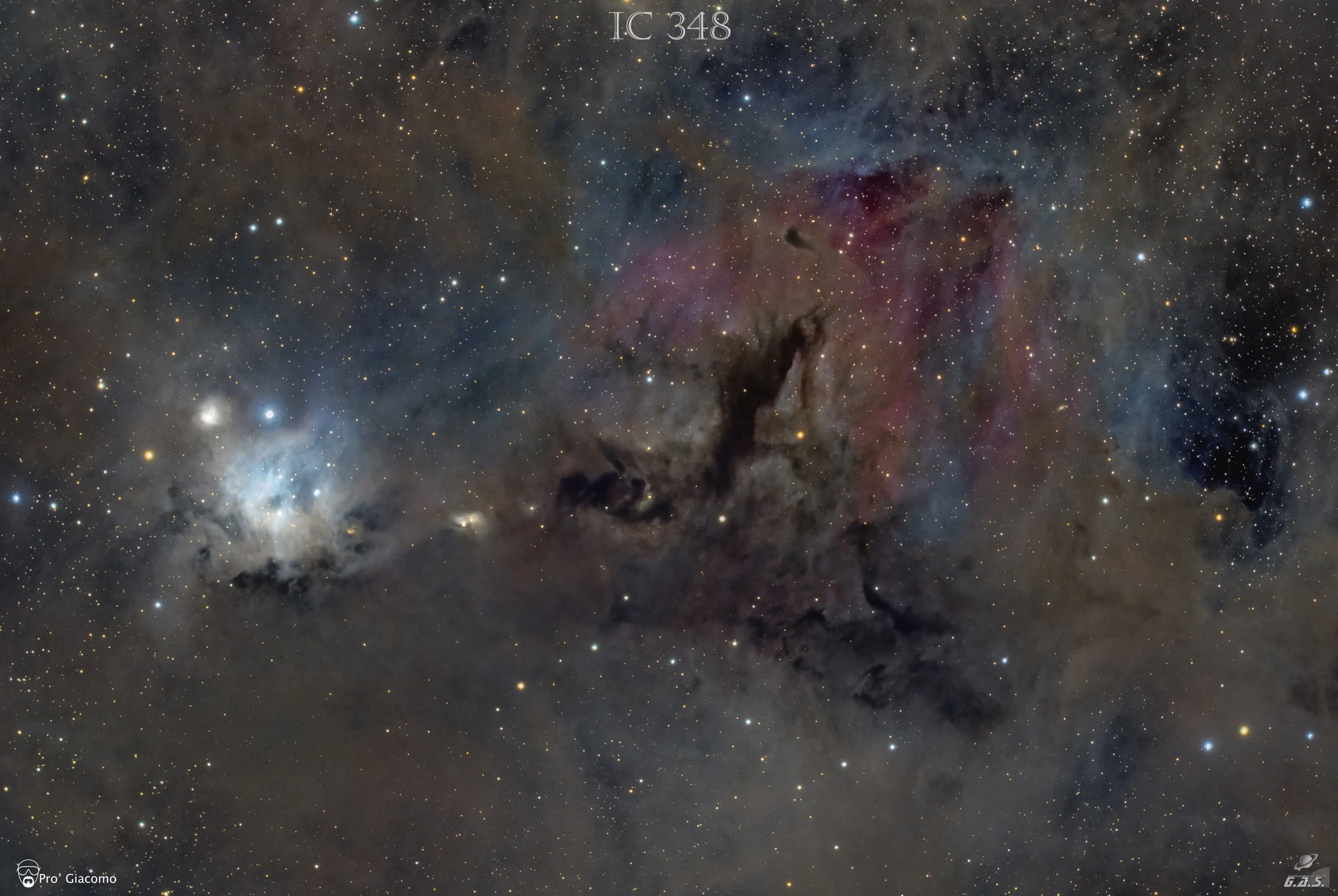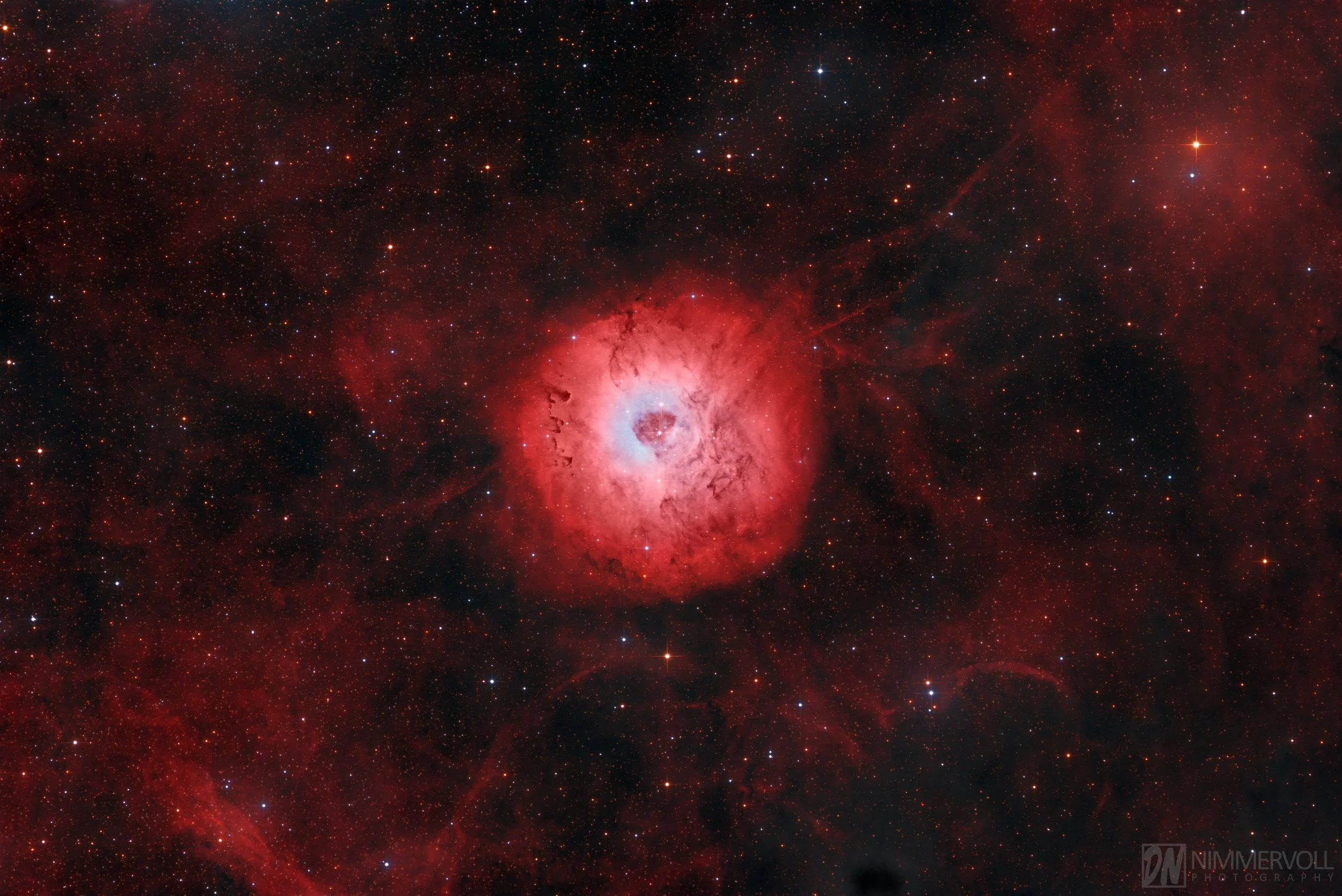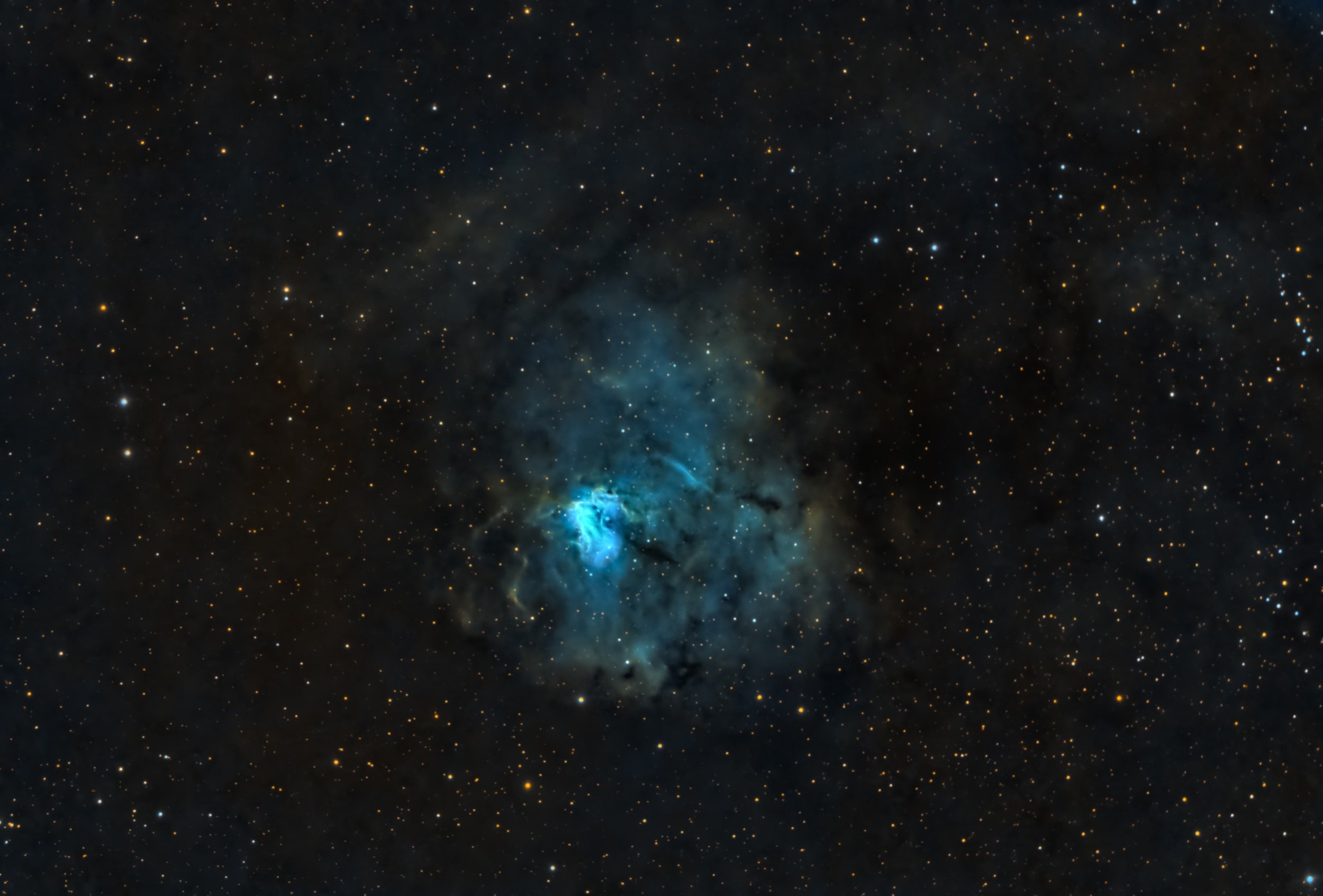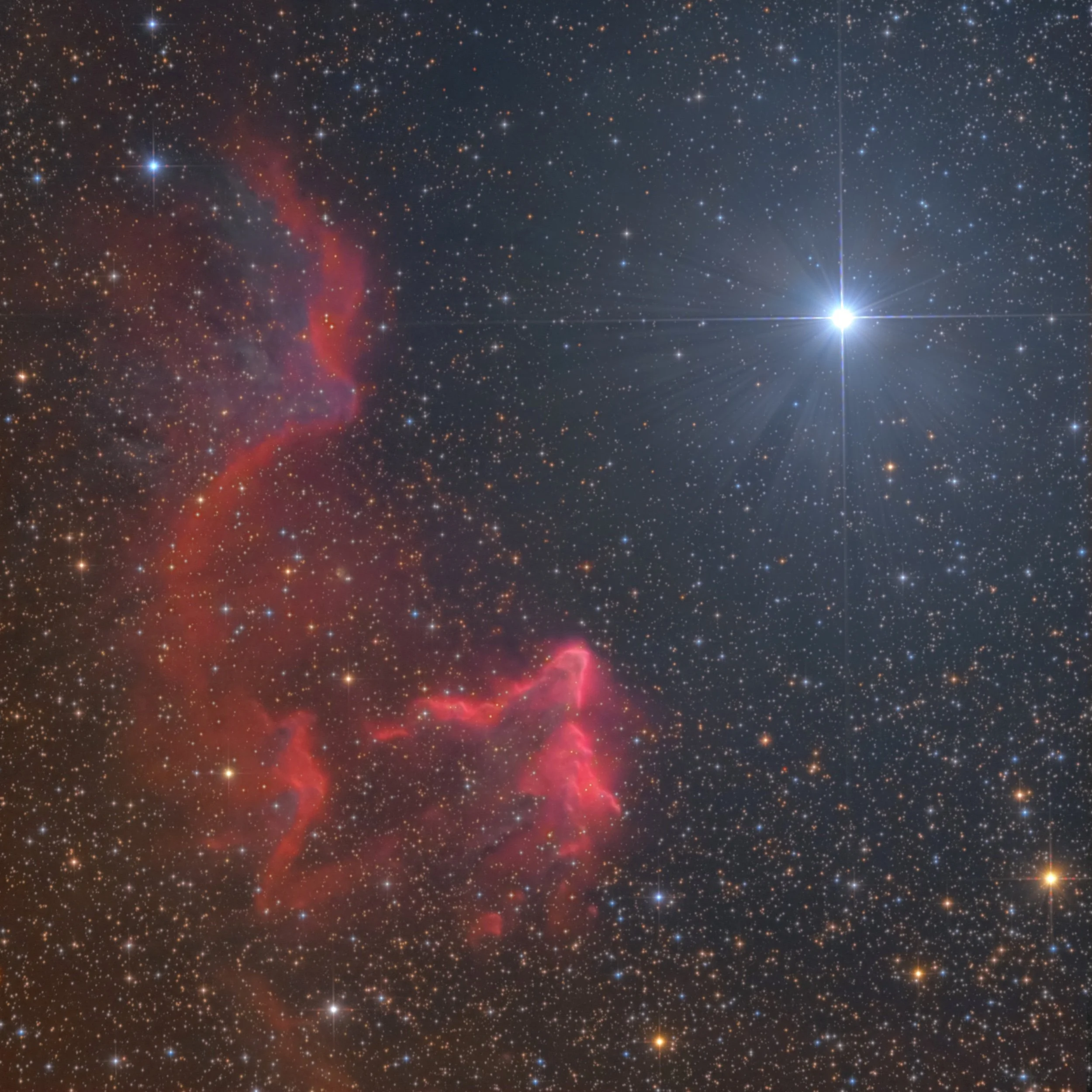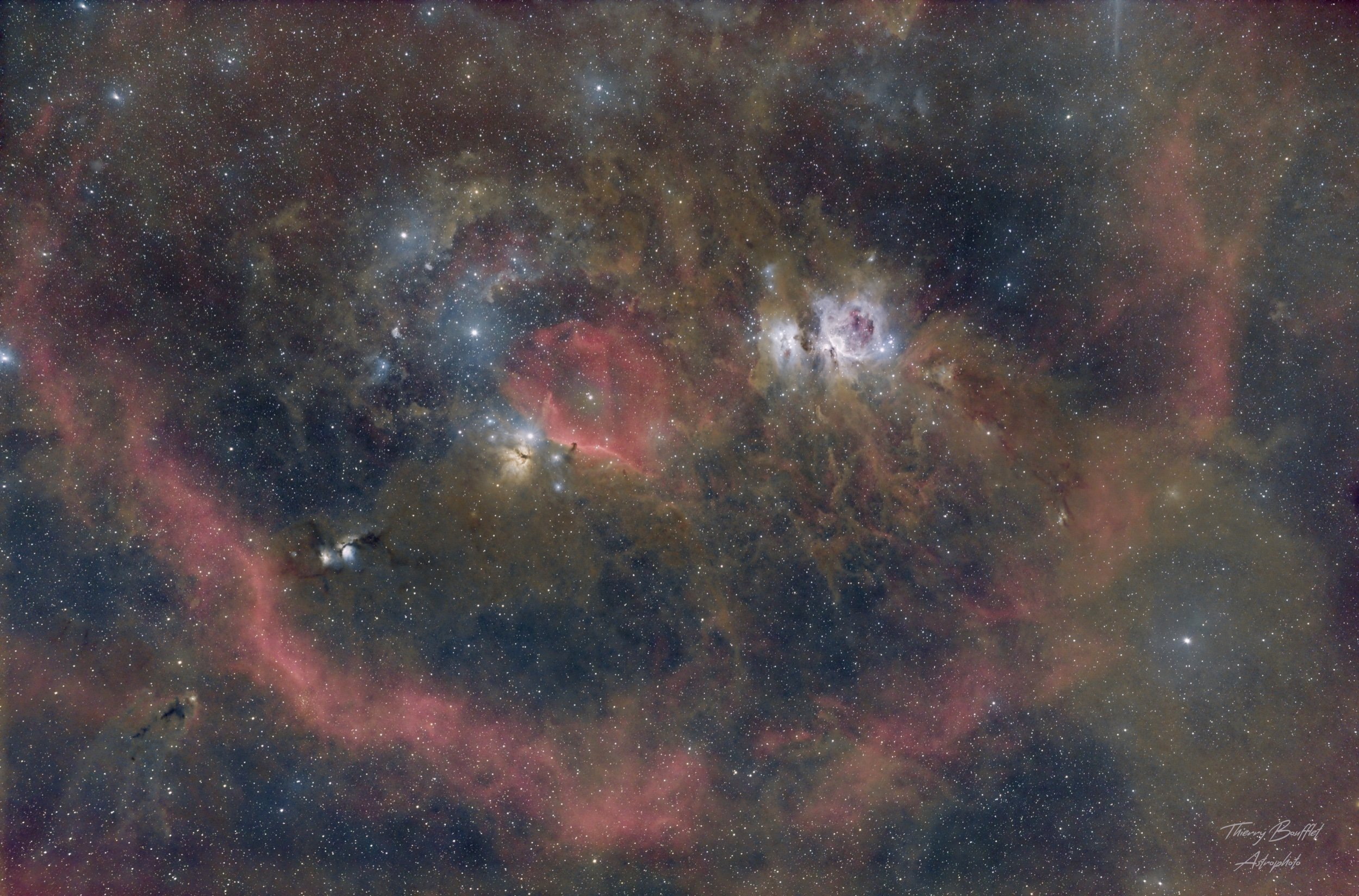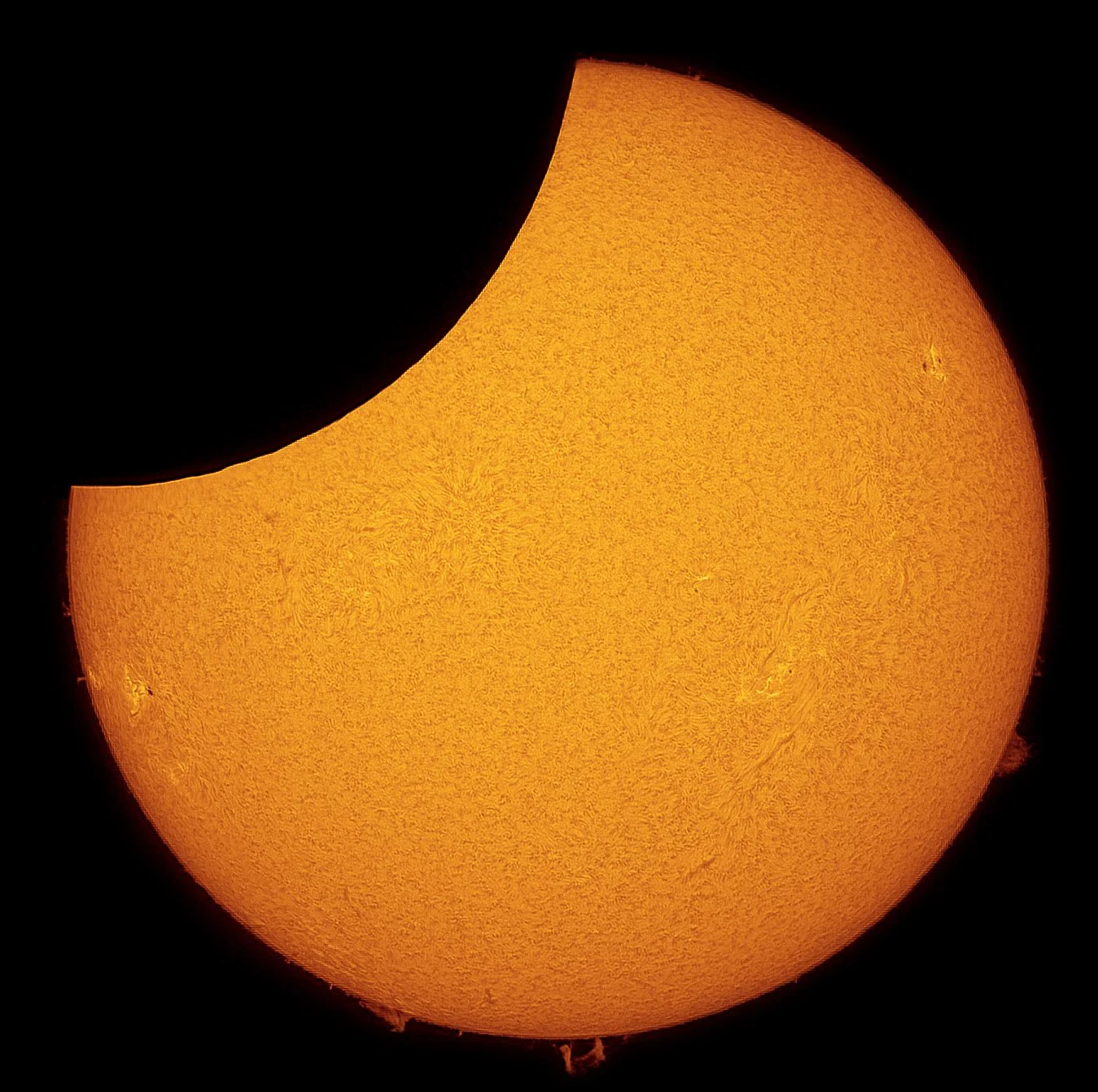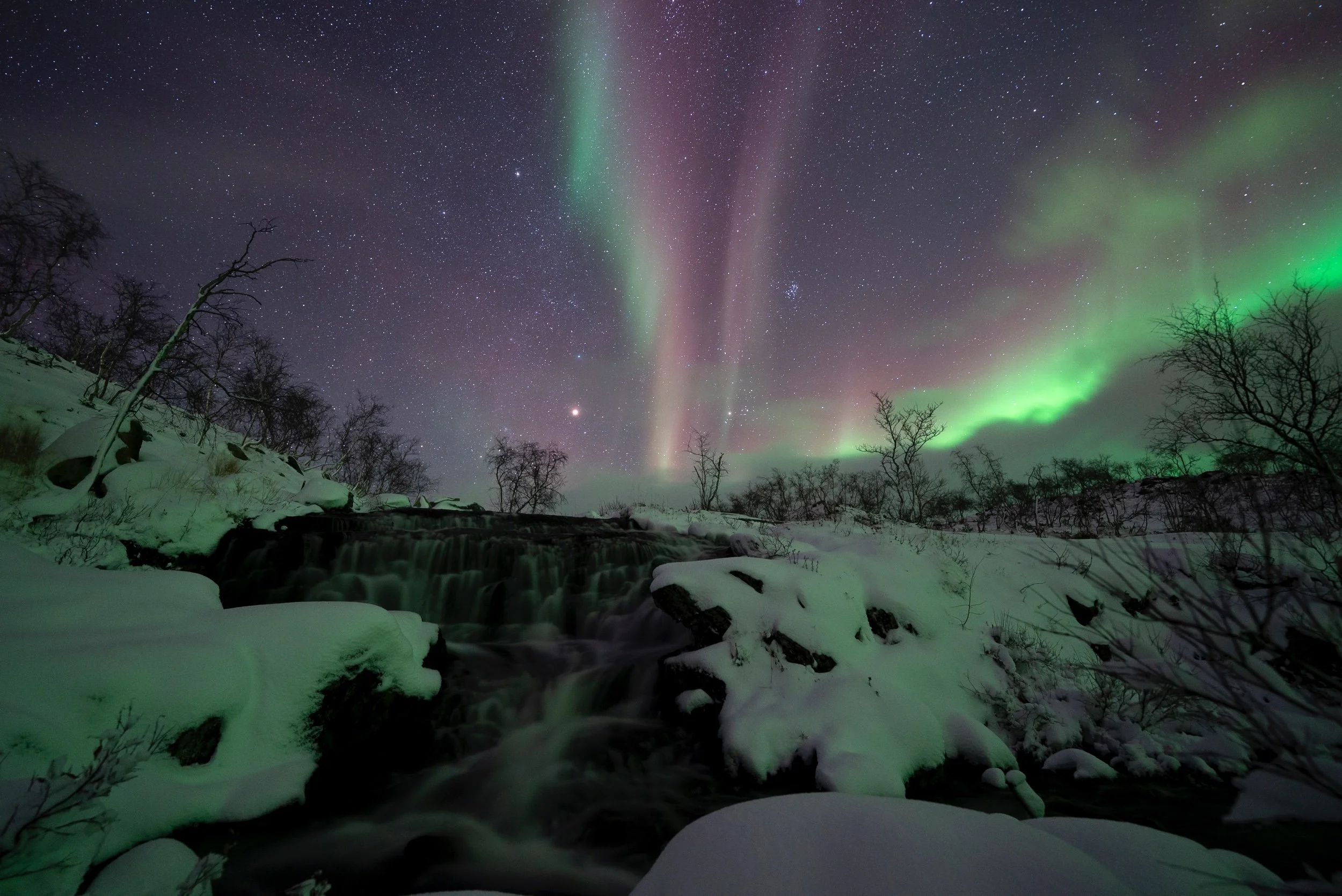
AAPOD2 Image Archives
ngc 1333
Image Description and Details : The picture was taken to show the area around NGC1333.
It was taken in one night from my backyard.
Image details:
220 min of total integration time.
110 x 120sec of light frames.
Calibrated with 30 darks, 15 flats and 15 dark flats.
Equipment used:
Celestron RASA 8 (400mm f2)
Omegon veTEC 571C
Skywatcher HEQ5 Pro
ZWO ASI 120mm Mini and a 50mm Guide Scope
ZWO EAF
Controlled by NINA
Edit with:
APP, Siril and Photoshop
Copyright: Christian Göppert
Toal Lunar Eclipse 2022 - from Farmington Hills, Michigan
Image Description and Details : The image was shot during the few clear minutes during maximum totality. The image is comprised of a stack of the best 25% of the frames.
Captured using the Celestron Evolution 8 with F6.3 focal reducer and ASI 294 MC Pro. recorded in Firecapture. Stacked in Autostakkert and processed in Photoshop.
Copyright: Michael Shapiro
Witch head nebula
Image Description and Details : Witch Head Nebula
[NGC1909 | IC2118 | LBN956]
Magnitude: +13.0
Distance: 899 ly
Constellation: Eridanus
This faint nebula resembles a shape that of a witches head. It was believed to be a remnant from of a supernova. Categorized as a reflection nebula. It is illuminated by a nearby blue supergiant star Rigel.
SCT 8”, Hyperstar v4, ZWO(ASI294MC Pro, ASIAR Pro, ASI290mm, EAF) | EQ6R P
94X120” | IDAS LPS D3
Gain: 100, -10 °C
APP, PS(Camera Raw + Plug-ins)
10/20/2022
Bortle 5 Ca, USA
Copyright: Paul Diosomito
The heart of the heart nebula
Image Description and Details : Capture Details:
Celestron 14” Edge HD with .7x reducer at F/8
Celestron OAG and a 174mm guide camera
Ioptron CEM 120 mount
ZWO 2600MM Pro cooled to -10° / gain 100.
Chroma 3nm S, H, O filters with ZWO 7x36mm EFW
Processed in Pixinsight.
Shot from my backyard, bortle 8 (October 2022).
Sii - 5 min subs x 179 = 14.9 hrs.
Ha - 5 min subs x 101 = 8.4 hrs.
Oiii - 5 min subs x 82 = 6.8 hrs.
Total integration time = 30.1 hrs.
Copyright: Richard McInnis
The Jellyfish Nebula in Geminiii
Due to the bad weather, I decided to invest some time in a new, improved version of the „Jellyfish Nebula“ (IC 443) in Gemini. I captured this fantastic nebula 7 months ago, and it’s still one of my favorite objects in the sky! Hope you like it!
Celestron RASA 8
Celestron Motorfocuser
EQ6-R Pro
ZWO ASI 2600 MC Pro (Gain 100, Offset 18, -10°)
RGB: 53 x 120" (1h 46')
Ha & OIII: 73 x 240" (4h 52')
Darks, Flats, Darkflats, Dithering
N.I.N.A., Guiding: ZWO ASI 120MM & PHD2
Astropixelprocessor, Photoshop, Pixinsight
copyright: Markus Horn
The Wing of the Swan
Image Description and Details : The Wing of the Swan. 108 hours over the course of 31 nights. I hope you enjoy this image as much as I loved creating it!
Details:
Imaging Telescope: OPT Telescopes TPO UltraWide 180 f/4.5
Imaging Camera: ZWO Astronomy Cameras ASI2600MC Pro
Mount: Sky-Watcher USA EQ6-R Pro
Filters: Baader Planetarium Fringe Killer 2", Optolong Astronomy Filter L-eXtreme 2"
Accessories: ZWO ASIAIR Plus, ZWO EAF
Baader Fringe Killer 2": 350×5″ (29′ 10″)
Optolong L-eXtreme 2": 810×480″ (108h)
Copyright: Jeffrey Horne
Baby Eagle Nebula
Image Description and Details : As soon as I saw a photo of this nebula on the internet, I immediately knew I also wanted to photograph it. I went up to a nearby mountain pass with dark skies that same night and shot the nebula for as long as my battery allowed me. I was very pleased that in addition to the Eagle, I was also able to photograph a large amount of the nearby dust clouds.
Telescope: Celestron RASA 8
Mount: Rainbow Astro RST-300
Camera: ZWO ASI 2600MC Pro
10/28/2022 San Bernardino, CH
4 hours of total integration time
Copyright: The Space Koala
Spitzkoppe Arch
Image Description and Details : The Spitzkoppe, or the "Matterhorn of Namibia", is a group of bald granite peaks located between Usakos and Swakopmund in the Namib desert of Namibia. More than 120 million years old, the highest outcrop rises about 1700mtrs above sea level. Many examples of Bushmen artwork can be seen painted on the rocks in the Spitzkoppe area though many of them have been destroyed. The Spitzkoppe Mountains were also the filming location for 2001: A Space Odyssey in the "Dawn of Man" sequences.
The rock arch seen here is also a well-known formation and has featured in many a composition and to photograph the arch, one has to camp inside the reserve as the gates are closed at night. Behind and to the left of the arch is the Spitzkoppe peak while to the right I think is the Pontos range. In the sky we can see the North American nebula and the Sadr region showing off their hydrogen gases and the Andromeda Galaxy puts in an appearance on the right, in an orientation we Northerners are not used to seeing….
Camera = Nikon D850 H-alpha mod
Lens = Nikon 14-24mm, Zeiss Otus 55mm
Sky Exposure = 10secs, f2, iso 6400, 18 panels
Ground Exposure = 480 secs, f2.8, iso 800, light painted
Software = PtGui, Pixinsight, Lightroom, Photoshop, Luminar Neo
Copyright: vikas chander
Ic 348
Image Description and Details : ic 348 ir flying ghost nebula
Questa distesa cosmica di polvere, gas e stelle copre circa 3 gradi del cielo nell'eroica costellazione del Perseo.
Si individua pochissimi primi d'arco a sud della stella ο Persei, nell'area di cielo in cui si incontrano le costellazioni di Perseo, Ariete e Toro; è poco nota nell'ambito dell'osservazione amatoriale a causa della vicina presenza delle Pleiadi e della ben più grande Nebulosa California, sebbene sia più luminosa delle nebulose associate alle Pleiadi.
In alto a sinistra nello splendido paesaggio del cielo c'è l'affascinante giovane ammasso stellare IC 348 e la vicina Flying Ghost Nebula alla periferia della gigantesca nuvola molecolare di Perseo, a circa 850 anni luce di distanza. Altre nebulose polverose sono sparse nel campo visivo, insieme al debole bagliore rossastro dell'idrogeno gassoso.
In effetti, la polvere cosmica tende a nascondere le stelle di nuova formazione e i giovani oggetti stellari o protostelle da telescopi ottici indiscreti. Crollo a causa dell'auto-gravità, le protostelle si formano dai densi nuclei incorporati nella polverosa nuvola molecolare. Alla distanza stimata della nuvola molecolare, questo campo visivo si estenderebbe per quasi 35 anni luce
Light 70 x 600” filter: Optolong L-Pro
Light 39 x 600” filter: Optolong UV/IR cut
+dark, flat e darkflat
Camera: Asi 294 mc pro
Telescope: Sharpstar 94 EDPH 517mm F5.5 reduced to 423mm F/4.4
Guide camera: Asi 120 mini Filter Svbony CLS
Guide scope: 50-190mm
Mount: Skywatcher Eq 6-r Pro
Acquisition: Asiair Plus
Software: Pixinsight – Photoshop
Shots:
19-20-25-27/10/2022 Manduria (TA)
28/10/2022 Stigliamo (MT)
Italy
Author: PRO’ GIACOMO
Copyright: PRO' GIACOMO
The Veil Nebula - a 4 pannel mosaic
Image Description and Details : EXIF DATA:
[General]
Camera: Sony a7r + QSI 583 [Kodak KAF8300]
Filters: Antlia RGB + Baader 7nm Ha + Optolong L-Extreme [Mainly for OIII]
Telescope: Skywatcher Esprit 100 + Riccardi 0.75 Reducer
Mount: iOptron cem70
Location: Schauinsland, Germany [Observatory from the "Sternfreunde Breisgau" local astronomy club]
[Integration]
Exposures:
Antlia Blue 1.25": 64×300″(5h 20′) -10°C bin 1×1
Antlia Green 1.25": 64×300″(5h 20′) -10°C bin 1×1
Antlia Red 1.25": 64×300″(5h 20′) -10°C bin 1×1
Baader H-alpha 7nm 1.25": 131×900″(32h 45′) -10°C bin 1×1
Optolong L-eXtreme 2": 231×300″(19h 15′) ISO3200 bin 1×1
Total: 68h
Copyright: Jakob Sahner
M81 & m82
Image Description and Details :FSQ106EDXIII and QSI683
Filter Astrodon
L: 39 x 900s
RGB: (19, 14, 18) x 300s
ORION ASTROGRAPH and 294C pro
Filter Optolong
L-PRO: 120 x 240s
TS RC 12" TRUSS and MORAVIAN G2-8300 MARK II
Filter Astronomik
L: 49 x 300s
Ha: 21 x 600s
RGB: 21 x 240s bin 2
Copyright: Luca Dinoi and Roberto Colombari
SH2-170
Image Description and Details :RECORDING DATA:
Location: Upper Austria
Date taken: August 2022
Distance: 7,500 light years
Diameter: -
Exposure: RGB each 30 x 120 sec. / Gain 56 at -15°C
Luminance: 192 x 150 sec / gain 0 at -15°C
H-Alpha: 39x 900 sec. / Gain 56 at -15°C
O-III: 32x 900 sec. / Gain 56 at -15°C
Total: 28.7 hours
Calibration: BIAS / Flats / DarkFlats
Mount: Skywatcher EQ6-R PRO
Telescope: Lacerta 10″ Fotonewton 250/1000
Corrector: Pál Gyulai GPU coma corrector
Filter: Antlia LRGB-V Pro
Antlia 3nm Pro H-Alpha
Antilia 3nm Pro O-III
Camera: QHY268m
Guiding: QHY OAG with QHY5III462c and PHD2
Software: APP / Photoshop CC
Copyright: Daniel Nimmervoll - astro-fotografie.at
Fossil Footprint Nebula in Hubble palette
Image Description and Details : NGC 1491 (also known as the Fossil Footprint, LBN 704 or Sh2-206) is a bright nebula discovered by William Herschel in 1790, in the constellation of Perseus. It is glowing deep red because the hydrogen gas in the nebula is energized by hot, massive stars embedded within. These stars emit copious amounts of ultraviolet (UV) light that causes the gas to glow.
Here is in Hubble palette rendition.
Konus 200/1000 @960mm, F4.8
Qhy168c @-5 °C
Sky-Watcher Eq6r Pro Mount
Optolong L_eXtreme 58x300" (gain 11, offset 60)
Optolong L_Ultimate 75x300" (gain 11, offset 60)
SvBony SII 7nm 172x300" (gain 11, offset 60)
SvBony UV/IR-cut 33x60" (gain 1, offset 35)
Kstars/ekos, APP, PixInsight, PS
Copyright: Massimo Di Fusco
Ic63
Image Description and Details :
IC63 THE GHOST OF CASSIOPEE
Very pale and indistinct nebula, it is nicknamed "The Ghost". It's a difficult object to see because it's drowned under a flood of stars. Only large light instruments allow you to see this nebula that accompanies IC 59, even less distinct.
Images unitaires:
Antlia 3nm Pro Ha: 16×240″(1h 4′) (gain: 100.00) f/3.6 -10°C
Antlia Blue Pro: 90×60″(1h 30′) (gain: 100.00) f/3.6 -10°C
Antlia Green Pro: 90×60″(1h 30′) (gain: 100.00) f/3.6 -10°C
Antlia Lum Pro: 249×60″(4h 9′) (gain: 100.00) f/3.6 -10°C
Antlia Red Pro: 90×60″(1h 30′) (gain: 100.00) f/3.6 -10°C
Total : 9H43
Matériels :
Newton Vixen R200SS
Monture Ioptron CEM120
Camera ASI533MM
Acquisitions avec NINA
Traitement Pixinsight & Photoshop
Copyright: lamagat frederic
Barnard's Loop M42 Wide Field
Image Description and Details : Samyang 135 F2.8 and Canon 6Da
140 x 60s
Mount Ioptron Skyguider pro
Copyright: Thierry BOUFFLET
October 25th 2022 Partial Solar Eclipse in H-Apha
Image Description and Details : The October 25th 2022 partial solar eclipse in H-Alpha taken at 12:01 CEST (10:01 UTC) from Casalgrande, in northern Italy.
SkyWatcher 70/500mm refractor with Coronado Solarmax 40. ZWO ASI 174MM
Copyright: Copyright: Alessandro Carrozzi
A Flaming Star, a Couple of Tadpoles, a Spider, a Fly, a Starfish, and a Gripping Hand Walk Into a Bar
Image Description and Details : The bartender asks, "Why the weird face?"
This bizarre collection of objects in the Auriga constellation looks like the face of the alien Xenu to me. But when I first discovered that this framing was possible, I really liked it.
In the upper left, the big orange thing is IC 405, the Flaming Star nebula. Just to its right, the blue-purple thing is IC 410, the Tadpoles (you can see the two small cometary globules that give it its name). Directly below the tadpoles, the small orange spot is IC 417, the Spider Nebula. Below and to the right of the Spider is NGC 1931, the Fly. And I've personally dubbed the red object to their left "The Gripping Hand" after the sequel to Larry Niven and Jerry Pournelle's incomparable SF novel The Mote in God's Eye (the sequel was far less engaging). The open cluster of stars near bottom center is Messier 38, the Starfish Cluster.
Deceptively, the Flaming Star is only 1,500 light years away, but the Tadpoles are 12,000 light years away. M38 is about 3,500 light years away and the Spider is about 10,000 light years distant. These disparate distances account for the varied chemical compositions and hence the colors they produce.
Details: William Optics ZenithStar 61 refractor; iOptron CEM25-EC mount; ZWO ASI6200MM camera; Antlia 3nm narrowband filters for the nebula and Antlia RGB filters for the stars; Bortle 8; 29.5 hours integration time.
Copyright: Copyright © 2022 by the Accidental Astronomers
The Snowy Waterfall
Image Description and Details : Today the aurora parameters had some life to them, but the skies here were mostly cloudy. I felt a bit sick due to my last nights adventures in the wilderness during a snowstorm, but I still decided to try my luck if the weather would get better even for a moment. I walked to the nearby waterfall which was now surrounded with fresh snow. After waiting a hour or two the skies got clear and you could see some red auroras dancing over the waterfall near the lake Tsahkaljärvi in Finland.
Sony A7S
Sony FE 14mm F/1.8 GM
ISO 2000
15 seconds
Minor adjustments in adobe photoshop
Copyright: Dennis Lehtonen
Ghost nebula
Image Description and Details : The Ghost Nebula is a reflection nebula in the constellation Cepheus. In this portrait you can see all the galactic space dust in our milky way Galaxy. In the bottom middle is the ghost nebula the name easily understood and is 2 light-years across.
Taken Northwest Missouri September 30 through October 18 at the Backyard country observatory, using a Orion 8 inch f3.9 newtonian astrograph, with a coma correcter. Canon 60d unmodified, autoguider orion starshoot 60mm guide scope, all on a celestron AVX mount.
3 night session total of 8 hours integration with 4 minutes subs of RAW exposures, ISO-1250
stacked using deep sky stacker. Pixlinsight dynamic crop, dynamic background ext, non linear stretch in histrogram tran, NoiseXTerminator, star mask using the morphology trans for star reduction, added a luminous mask used curves, for saturation’s,
Photoshop: saturations adjustments, color balance, highlights, selective color adjustments, smart sharpening.
Copyright: Jared Bowens
Strottner-Drechsler 99 (StDr 99)
Image Description and Details : We are pleased to present you today the first ever image of a candidate planetary nebula unknown to this day.
Team members Xavier Strottner and Marcel Drechsler discovered this object in June 2020.
This item has been analysed and added to the StDr catalogue by Pascal Le Dû.
StDr 99 is also registered in the PN Global Base managed by Professor Quentin Parker of the University of Hong Kong.
StDr 99 is located in the constellation Cepheus and has an apparent size of 17 arc minutes.
This nebula is so weak, especially [OIII], that nearly 200 hours of exposure were required.
Many thanks to Sven Eklund for working with me in imaging this challenging object, and to Marcel for processing the image.
Data captured between 20 July - 7 August 2022.
Scopes: APM TMB LZOS 152 Refractors and Celestron C14 Edge HD
Cameras: QSI6120wsg8 and ZWO ASI6200MM Pro
Mounts: 10Micron GM2000 HPS and iOptron CEM120
A total of 196 hours 15 minutes (HaOIIIRGB)
Copyright: Copyright: Peter Goodhew, Sven Eklund, Xavier Strottner, Marcel Drechsler



